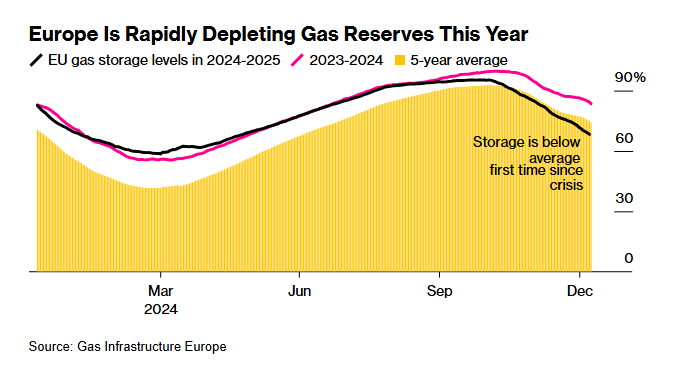Inflation Ticks Up to 2.9%, but Underlying Price Gains Are Muted
The overall consumer-price index came in relatively hot, rising 2.9% over the year, the Labor Department said Wednesday. The index rose 0.4% from the previous month, driven by a 4.4% jump in gas prices.
The so-called core CPI, which excludes volatile food and energy prices, rose 0.23%, its smallest gain since July and less than the 0.3% increase expected by economists. (…)
Prices for services, which account for a greater share of spending, were firmer, rising 0.3%. That gain was partly driven by airfares, car insurance and housing, though the latter two categories have been cooling. (…)
Economists at JPMorgan estimated last week that a 10% universal tariff—one of the options Trump has floated—would increase consumer prices by 0.3 to 0.6 percentage point, depending on how much the dollar appreciates. (…)
How muted are these underlying prices?
Core CPI needs to average 0.17% MoM (the black line) in order to be confident the annual rate of core inflation is on the path to the 2% target.
US core inflation MoM%, 3M% annualised and YoY%

Source: Macrobond, ING
On a quarterly basis, core CPI has been fairly stable at +3.3% since Q3’23 though December’s +2.7% increase is encouraging:
The trend in services is particularly positive: +3.2% a.r. in December from +5.0% last August:
On a quarterly basis, core services inflation was 4.05% in Q4, up from +3.5% in Q3 but down from +4.5% in Q2, all still above pre-pandemic levels, but slowly trending down nonetheless:
Core goods prices rose 0.1% MoM in December after +0.3% in November. Core goods inflation turned positive in September after negative prints in 14 of the 15 previous months.
On a quarterly basis, core goods inflation was +1.3% in Q4 following 5 consecutive negative readings averaging –1.3% (-1.9% in Q3’24).
Goldman Sachs: “Based on details in the PPI and CPI reports, we estimate that the core PCE price index rose 0.15% in December (vs. 0.22% before the CPI release), corresponding to a year-over-year rate of +2.78%.”
Inflation will take a back seat to the labor market in Fed narratives, at least for a little while…
Trump Floats Creating ‘External Revenue Service’ for Tariffs
(…) “I will create the EXTERNAL REVENUE SERVICE to collect our Tariffs, Duties, and all Revenue that come from Foreign sources,” Trump said in a post to his Truth Social network on Tuesday.
“We will begin charging those that make money off of us with Trade, and they will start paying, FINALLY, their fair share. January 20, 2025, will be the birth date of the External Revenue Service,” he added. (…)
Tariffs are currently collected by Customs and Border Protection, whose agents review paperwork, perform audits, and collect levies and penalties, with the money then deposited into the Treasury Department’s General Fund. They account for less than 2% of federal revenue. (…)
Analysts greeted the news with skepticism and highligted that the CBP already collects that revenue, a function dating back to the era of Alexander Hamilton. They also noted that tariff revenues aren’t an external source given that they are paid for by US consumers.
“This is gimmicky branding that will duplicate an existing federal agency to collect customs revenue,” said Brian Riedl, a senior fellow at the Manhattan Institute and former Republican staff member at the Senate Finance Committee. “It is not collecting external revenue, it is collecting a tax” on Americans who pay for tariffs, he added. (…)
From the CPB’s Guide for Commercial Importers:
There is no provision under which U.S. duties or taxes may be prepaid in a foreign country before exportation to the United States
The obligation for payment is upon the person or firm in whose name the entry is filed. When goods have been entered for warehouse, liability for paying duties may be transferred to any person who purchases the goods and desires to withdraw them in his or her own name.
In short: import taxes are paid by the importer, part of costs of goods.
Meanwhile, in Canada:
Carney, Freeland Duel for Trudeau’s Job as Ministers Opt Out
Two people versed in economics and finance.








